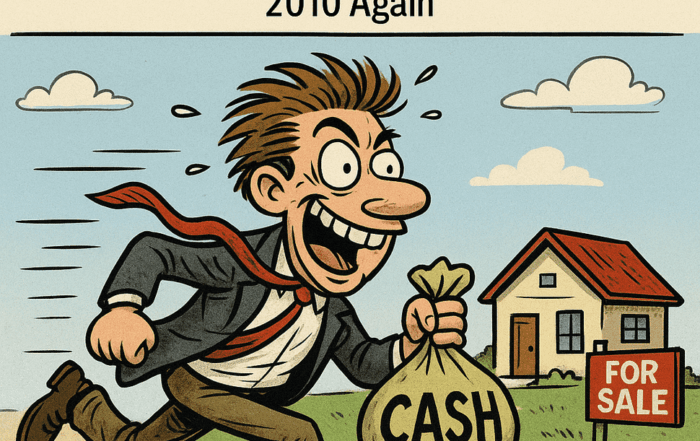
How to Manage Rising Costs in Short-Term Rentals: Smart Strategies for Investors
How to Manage Rising Costs in Short-Term Rentals: Smart Strategies for Investors
Introduction
Short-term rental (STR) investing has been a profitable strategy for many, especially in high-demand locations like Florida. However, rising insurance premiums, property taxes, and operational costs have made maintaining profitability more challenging. As an investor managing 30 properties, I’ve experienced these challenges firsthand. But with proactive strategies, it’s possible to lower costs, improve cash flow, and keep your rental business profitable.
Understanding the Cost Increases
Over the past few years, STR owners have faced significant increases in:
-
Insurance Premiums: Many insurance companies have raised rates due to market risks, inflation, and regulatory changes.
-
Property Taxes: Surging property values have led to higher tax assessments.
-
Maintenance and Repairs: Increased material and labor costs have made property upkeep more expensive.
-
Utilities and Services: Costs for water, electricity, internet, and cleaning services continue to climb.
-
Regulatory Fees: More cities are implementing STR licensing fees, compliance costs, and zoning restrictions.
Strategies to Reduce Mortgage and Loan Expenses
1. Consider an Interest-Only Loan
Refinancing into an interest-only mortgage can significantly lower monthly payments, providing short-term relief while you work on increasing revenue.
2. Negotiate a Loan Modification
Some lenders are willing to adjust terms to help borrowers manage cash flow. If you’ve maintained a good payment history, you may be able to negotiate a lower rate, extended term, or temporary payment reduction.
Cutting Insurance Costs Without Losing Coverage
3. Shop Around for New Insurance Quotes
Many investors renew existing policies without exploring better options. By obtaining multiple quotes from different insurers, you may find significantly better deals.
4. Adjust Your Coverage
Review your policy carefully to ensure you’re not paying for unnecessary coverage. For example, some policies include extras like personal liability coverage that STR owners might already have under umbrella policies.
5. Bundle Policies
If you own multiple properties, bundling your insurance policies with one provider can lead to bulk discounts.
Managing Property Taxes
6. Appeal Your Property Taxes
If your tax assessment has increased significantly, consider challenging it. There’s usually an option at the bottom of your tax bill to file an appeal. Many investors overlook this simple and effective way to lower costs.
7. Apply for Tax Exemptions
Some jurisdictions offer tax breaks for STRs used as primary residences or for properties offering affordable housing options. Research local tax incentives to see if you qualify.
Increasing Revenue Without Raising Prices
8. Optimize Your Listing
-
Update Photos and Descriptions: High-quality images and detailed descriptions can attract more bookings.
-
Highlight New Amenities: Showcase recent upgrades or unique features.
-
Improve Response Rate: Quick responses can boost your rankings on platforms like Airbnb.
-
Offer Flexible Check-In/Check-Out Times: Flexibility can appeal to a broader range of guests.
9. Offer Special Deals to Repeat Guests
Reach out to past guests with discounts to encourage repeat bookings. This strategy fills vacancies and saves on marketing costs.
10. Contact Companies for Seasonal Workers
Many businesses require housing for traveling workers, especially in seasonal industries like tourism and construction. Partnering with these companies can ensure steady bookings.
Improving Operational Efficiency
11. Switch to a Hybrid Model (STR + Long-Term Rental)
Some STR owners are now splitting their properties into:
-
Short-Term Rentals: For high seasons and weekends.
-
Long-Term Tenants: For slow seasons or off-peak days.
This hybrid model can help stabilize cash flow and reduce vacancy risks.
12. Automate Where Possible
Invest in smart locks, automated messaging systems, and dynamic pricing tools to reduce management time and costs.
Managing Utility and Maintenance Costs
13. Negotiate Better Rates with Service Providers
Whether it’s internet, electricity, or cleaning services, negotiate with providers for bulk discounts or business pricing.
14. Install Energy-Efficient Upgrades
Simple changes like LED bulbs, smart thermostats, and water-saving fixtures can significantly cut monthly utility bills.
Leveraging Professional Property Management
Managing multiple properties can be time-consuming and complex. Partnering with a professional property management company can:
-
Save Time: They handle day-to-day operations, allowing you to focus on other investments.
-
Reduce Risks: Experienced managers ensure compliance with local regulations and handle tenant issues effectively.
-
Boost Returns: Their expertise can lead to higher occupancy rates and optimized rental income.
As highlighted in the article “The Real Cost of Managing Your Own Property: Why Partnering with a Professional Property Manager Is the Smarter Choice,” professional management can lead to better-maintained properties and increased occupancy rates. (graystoneig.com)
Understanding Real Estate Cycles
Real estate markets are cyclical, and understanding these cycles can help investors make informed decisions. During downturns, focusing on long-term equity growth rather than immediate cash flow can be beneficial. Investing in areas with strong appreciation potential, even if cash flow is minimal, can lead to substantial returns over time. (graystoneig.com)
Exploring Alternative Rental Strategies
If traditional long-term rentals aren’t yielding desired results, consider alternative strategies such as:
15. Mid-Term Rentals (30-90 Day Stays)
Platforms like Furnished Finder and Airbnb cater to traveling professionals, digital nomads, and temporary relocations. These rentals often command higher rates than traditional long-term leases while reducing turnover costs compared to STRs.
16. Corporate Housing Partnerships
Develop relationships with companies that need short-term housing for relocating employees. These tenants often stay for months and pay premium rates.
17. Co-Living and Room Rentals
Larger properties can be converted into co-living spaces, where multiple tenants rent rooms instead of the entire unit. This model can increase revenue per square foot while ensuring consistent occupancy.
Conclusion
Running a short-term rental is still a profitable venture, but rising costs mean investors need to be more proactive. Whether it’s refinancing, negotiating insurance, adjusting tax assessments, optimizing listings, or reducing operational costs, there are always ways to improve cash flow and stay profitable.
With 30 properties under my belt, I’ve seen these challenges firsthand—but I’ve also found solutions that work. If you’re serious about keeping your STR profitable, implementing even a few of these strategies can make a huge difference. Let me know if you want to chat more—I’m always happy to connect and help fellow investors find creative solutions!
Written by Jorge Vazquez, CEO of Graystone Investment Group & Coach at Property Profit Academy.
Connect with me here: http://graystoneig.com/ceo
Pick your expert. Book your free 15-minute consult now. We are here to help!
Our Top Articles
How Does a Property Flipper Make a Profit in 2025?
Jorge Vazquez2025-07-11T20:16:48+00:00July 11th, 2025|Comments Off on How Does a Property Flipper Make a Profit in 2025?
How Does a Property Flipper Make a Profit in 2025? By Jorge Vazquez, CEO of Graystone Investment Group It's [...]
The College Rental That Nearly Schooled the Landlord: Lessons from Bradley’s Student Housing Fiasco
Jorge Vazquez2025-07-10T19:32:35+00:00July 10th, 2025|Comments Off on The College Rental That Nearly Schooled the Landlord: Lessons from Bradley’s Student Housing Fiasco
A "Safe Bet" Gone Sideways Bradley is one of those agent-investors we all admire. Sharp, experienced, hands-on, [...]
Opportunistic Buyers Are Back: Why Florida’s Real Estate Market Feels Like 2010 Again
Jorge Vazquez2025-07-09T01:10:13+00:00July 8th, 2025|Comments Off on Opportunistic Buyers Are Back: Why Florida’s Real Estate Market Feels Like 2010 Again
If you were around during the aftermath of the 2008 crash, you might remember that eerie silence around 2010—the [...]
Property Profit Academy:
✔ Learn to buy properties with little to no money down.
✔ Build a $10M portfolio step by step.
✔ Master strategies like BRRRR and house hacking.









